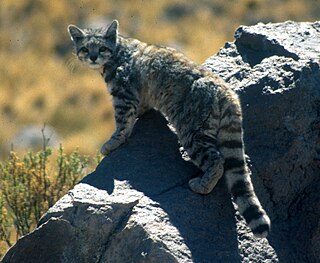- Extinct in the wild (EW): 2 species
- Critically endangered (CR): 545 species
- Endangered (EN): 848 species
- Vulnerable (VU): 670 species
- Near threatened (NT): 402 species
- Least concern (LC): 2,458 species
- Data deficient (DD): 1,567 species
- 6492 extant species have been evaluated
- 4925 of those are fully assessed [lower-alpha 1]
- 2860 are not threatened at present [lower-alpha 2]
- 2063 to 3630 are threatened [lower-alpha 3]
- 35 to 148 are extinct or extinct in the wild:
- 33 extinct (EX) species [lower-alpha 4]
- 2 extinct in the wild (EW)
- 113 possibly extinct [CR(PE)]
- 0 possibly extinct in the wild [CR(PEW)]
- ↑ excludes data deficient evaluations.
- ↑ NT and LC.
- ↑ Threatened comprises CR, EN and VU. Upper estimate additionally includes DD.
- ↑ Chart omits extinct (EX) species
As of January 2022, the International Union for Conservation of Nature (IUCN) lists 1193 data deficient amphibian species. [1] 16% of all evaluated amphibian species are listed as data deficient. No subpopulations of amphibians have been evaluated by the IUCN.
Contents
- Salamanders
- Lungless salamanders
- Asiatic salamanders
- Mole salamanders
- Salamandrids
- Frogs
- Water frogs
- Robber frogs
- Robust frogs
- Dancing frogs
- Alsodids
- Shrub frogs
- Cryptic forest frogs
- True toads
- Fleshbelly frogs
- Glass frogs
- Batrachylids
- Litter frogs
- Screeching frogs
- Hemiphractids
- Cycloramphids
- Poison dart frogs
- Mantellids
- Ceratobatrachids
- Fork-tongued frogs
- Narrow-mouthed frogs
- True frogs
- Australian water frogs
- Puddle frogs
- Hylids
- African reed frogs
- Tongueless frogs
- Pyxicephalids
- Shovelnose frogs
- Odontophrynids
- Ptychadenids
- Southern frogs
- Saddleback toads
- Hylodids
- Other frog species
- Gymnophiona
- Scolecomorphids
- Indotyphlids
- Ichthyophiids
- Dermophiids
- Typhlonectids
- Siphonopids
- Caeciliids
- Rhinatrematids
- Other Gymnophiona species
- See also
- References
This is a complete list of data deficient amphibian species and subspecies as evaluated by the IUCN. Where possible common names for taxa are given while links point to the scientific name used by the IUCN.




